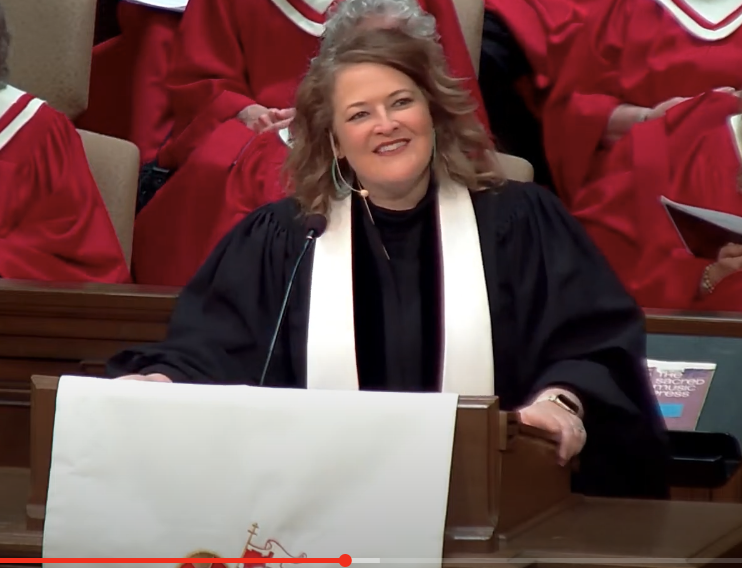I. This year for Christmas, one of our children’s favorite presents came
from their fun Uncle Adam and Aunt Adrienne, who gave each kid LED strip
lights for their rooms. Perhaps you know the kind. These long, thin strips of
bulbs come rolled up in a large plastic spindle, which – unfurled and attached
to the wall and glowing – can turn any color you might desire, thanks to a
little remote which does the trick. Want a lavender haze around your bed?
Done! How about a cool blue to set the vibe? You got it. What about a
flashing red just to really mix it up (and induce an instant headache in your
parents)? Of course.
I can’t say that these colorful LED lights exactly go with the decor of our
house, but in the spirit of practicing independence and agency in our kids
(and loosening the reins of control for me!), they’re up, and oh are they ever
UP. As we headed to bed that night with kids’ bedrooms awash in shades of
the rainbow, Josh said to me, “there’s no telling what our neighbors think is
happening over here!”
But what has fascinated me endlessly is watching my kids respond to
how they feel within the light’s beams. “My room is so cool now,” I’ve heard.
It’s as if they see their space – pun very much intended! – in a whole new
light, and perhaps themselves, and maybe just a bit of the world itself.
II.Though you may not have purple LED lights streaming around your
bed, you too know what it’s like to see yourself in the beams of another light –
how different it feels to be under the harsh gaze of hospital fluorescents instead of in the soft glow of a baby’s nursery, what you feel about yourself
under the spotlight or behind the blue light of a screen, how your perspective
shifts when under the sun’s warm brush after a cloudy day or when operating
within your daily life but by candlelight when the power goes out. In his
“Blessing for the Light,” poet David Whyte thanks the light, praising “the way
you make me look at the face of the world so that everything becomes an
eye to everything else and so that strangely, I also see myself being seen.”1
Light gives room so we can see ourselves being seen. It captures
imagination and identity. It graces the world with form and shape, and casts
wide its gleam without boundary or reservation. No matter the type – a
dawning sun, an infrared laser, a flickering firefly, a flash of lightning, the
glowing embers of a campfire, a blinding flashlight, dim headlights on a
country road, twinkling lights on a Christmas tree, and yes, even the colorful
LED strip lights in a bedroom – we humans can’t help but to be drawn into
light’s beam and beckoned by its invitation.
It’s the light of a star which calls us to deeper examination today, the
star high above Bethlehem that calls to the Magi. You remember the Magi,
those auspicious gift-bearers of any manger scene, “the fun ones with the
camels,” as one child said. Yet far beyond our simplistic reduction of these
travelers from the East, we’d be wise to remember that these were
astrologers and scientists and philosophers and dream-interpreters, whose
practiced gazing into the darkness led them to be first to recognize God’s
revelation in Jesus Christ. Their journey began laced with fear and shadows,
Herod’s fear their driving impetus to set forth. They’d come to Jerusalem –
the seat of power, the home of the only kings they’d known – asking about the child born king of the Jews. It was a threat that immediately stirred Herod’s
response, so terrified by a perceived threat to his power. “Go and search
diligently for this child,” he instructed them. “They set out,” Matthew tells us,
“and there ahead of them went the star that they had seen at its rising.”
For you see they saw a light that summoned them in part because they
knew to look for it. Perhaps it was a comet that tore open the night’s sky, or a
conjunction between planets that lit up the heavens, or simply a light they
just couldn’t shake. Whatever the nature of the star they spotted, from
Jerusalem they set forth with intention to Bethlehem, in a sincere and
persistent search for the baby, guided by God’s light each step of the way.
And when the star stopped over the place of the babe, they entered
overwhelmed with joy, their hearts alive with worship and their arms filled
with gifts.
III.On this Epiphany Sunday right as the new year begins, the Magi at the
manger and the star overhead offer us an invitation to consider the light we
follow and to pay attention to what lights we’re following without even
realizing it.
I’ve had this on my mind as I’ve immersed myself in a new book I got for
Christmas called Stolen Focus: Why You Can’t Pay Attention – and How to Think
Deeply Again. Author Johann Hari chronicles with unflinching precision the
way that tech companies use every tool at their disposal to capture our
attention while keeping our eyeballs on their apps and websites. His statistics
about what technology has done to our capacity to pay attention are chilling.
The average American office worker is distracted once every three minutes;
the average college student, every 65 seconds. CEOs of Fortune 500 companies
get,on average, 28 uninterrupted minutes per day. 40% of Americans are chronically sleep-deprived, in part because of the screens just
within our reach that 90% of us look at within the hour before going to bed.
We’re now exposed to 10 times the amount of artificial light that people were
exposed to just 50 years ago.2 And so on, and so on. And the kicker? We can
hardly put our finger on what this time behind the light of a screen is doing to
us, rather we just feel its effects.
I can only imagine what it’s doing to the human psyche to follow the
light of the screens so completely, to see ourselves within their light. But
beyond the screens in our lives and their effect on the world, I’m so struck by
the truth that these are lights we follow without even realizing it sometimes.
What, too, of the other lights we follow unintentionally? What of the light of
anger or resentment we can’t turn off? Or the light of worry or indifference
that just won’t dim? Or the light of success and prosperity that we can’t tell is
just a mirage? Might you ask yourself today: what lights am I following that I
don’t even realize? What light will I choose to follow?
I think too of the lights we follow together. I heard someone say of 2024, “let’s just put our heads down and try to get through it.” I don’t have to
remind you that this is an election year unlike any other, that the climate
crisis is worsening and authoritarianism is increasing, that war is stealing
lives and land and that poverty is robbing dignity and hope. I don’t have to
remind you that the Herods of our world are on the march, using every tool at
their disposal to root out all which terrifies them. So I ask again: what lights
are we following that we don’t even realize? What light will we choose to follow?
2024 promises to be another meaningful, life-giving, transformative
year in the life of our church. We have new faces among us, new imaginations
for our space and our ministries on the horizon, new commitments in our
neighborhood and around the world, new leaders to find and follow. There is
potential and possibility around every turn, and I am endlessly hopeful for
what can be. So we ask ourselves: what lights are we following that we don’t
even realize? What light will we choose to follow?
IV.I’ve shared with you before the story I love and have framed in my
home of Thomas Merton, the longtime Trappist monk whose life changed one
afternoon while out running errands for the monastery.
“In Louisville, at the corner of Fourth and Walnut, in the center of the
shopping district,” Merton says, “I was suddenly overwhelmed with the
realization that I loved all those people, that they were mine and I theirs, that
we could not be alien to one another even though we were total strangers. It
was like waking from a dream of separateness, of spurious self-isolation in a
special world, the world of renunciation and supposed holiness… This sense
of liberation from an illusory difference was such a relief and such a joy to me
that I almost laughed out loud… I have the immense joy of being man, a
member of a race in which God Himself became incarnate. As if the sorrows
and stupidities of the human condition could overwhelm me, now I realize
what we all are. And if only everybody could realize this! But it cannot be
explained. There is no way of telling people that they are all walking around
shining like the sun.”3
I know that intersection, there in downtown Louisville, and I tell you —
it’s really not all that special. Tall buildings, cars whizzing by, people hurrying
to and from work, immersed in the busyness and the rhythms and the
motions of daily living. And yet, right there in the midst of the ordinary was a
sacred, holy moment for Thomas Merton of unmistakable light, light which
cannot help but to reflect its Source. “A Revelation,” the historical marker
says of that spot. An epiphany, if you will, reminding people of their light
within from sun and Son, and the Light they’re called to follow.
V.Within the glow of the manger, I imagine the three Magi saw
themselves differently from then on. Like they knew this was the light that
allowed them “to see themselves being seen.” Like they knew this was the
light that had them “walking around shining like the sun.” Perhaps that
practice of following the light helped them when it was time to go. I imagine
they didn’t really want to! With courage, they departed what they knew
because they’d caught a glimpse of a light they just couldn’t shake. For in light
of the holy star, every other light they followed cast a duller hue, a dimmer
promise. They knew now not to be enticed by that which shines does not
lighten, that which brings more heat than light. But their hope wasn’t lost, for
they only had to look up into the night sky to remember the star that took
them to what they thought would be their journey’s end, but became only its
beginning.4
Maybe it can be our beginning too! Amen.




